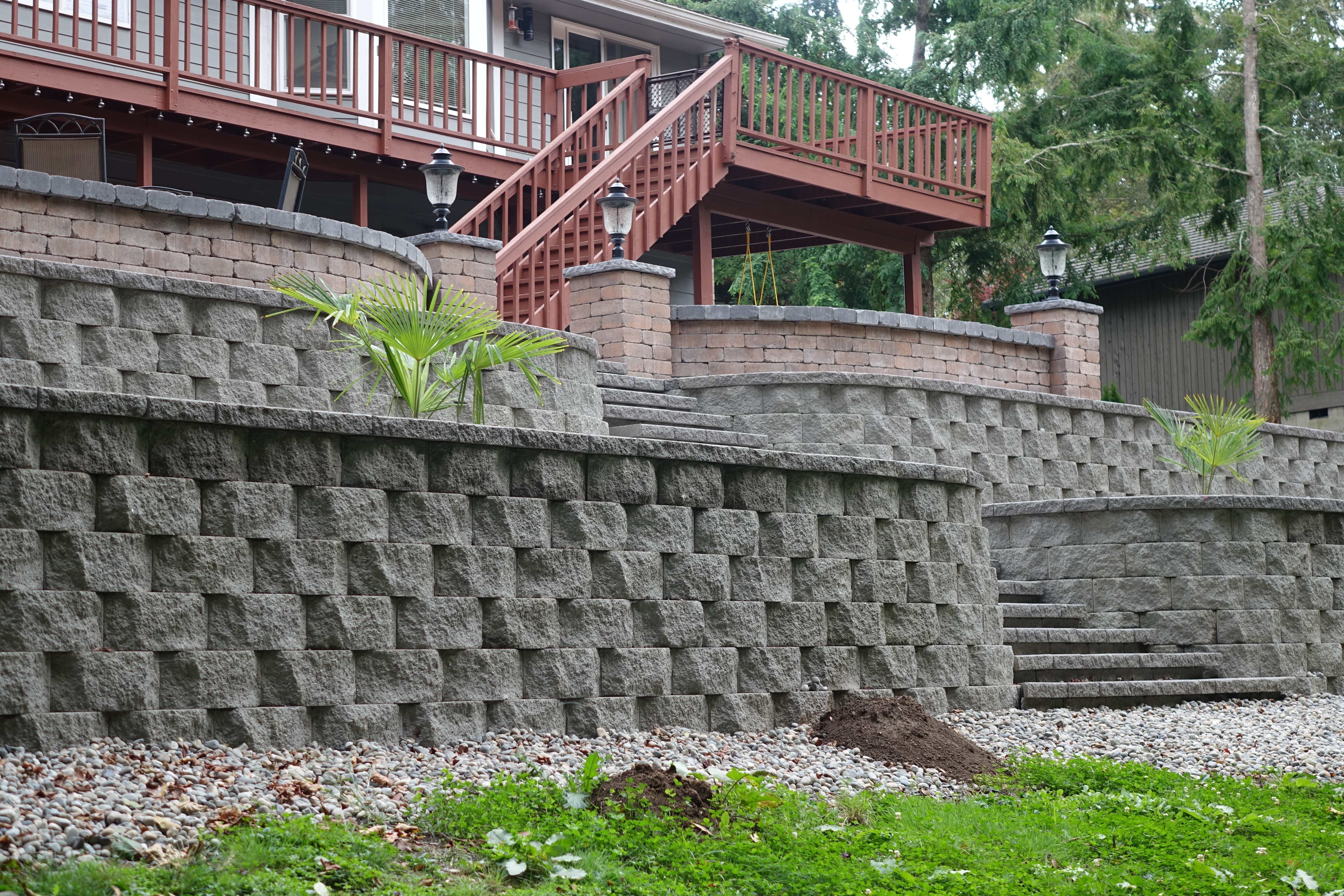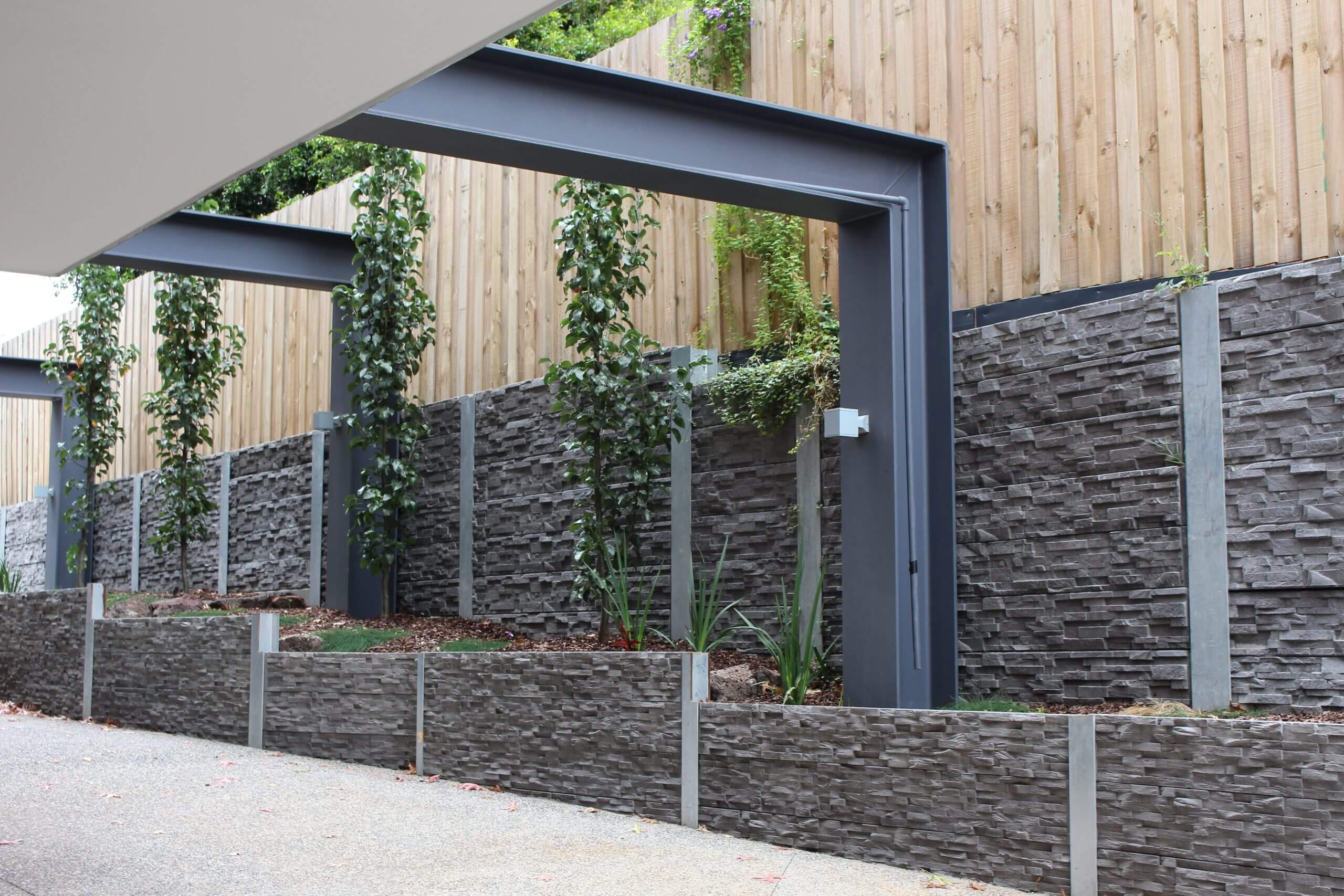OKC Precision Retaining Walls: Building stability and style into your property
Key Considerations for Structure Effective Retaining Walls in Your Backyard
When you're taking into consideration developing a retaining wall surface in your lawn, it's crucial to consider a number of key elements. The wall surface's purpose, the materials you'll use, and the details dirt problems can all influence its performance and long life. You'll likewise need to navigate local building codes and strategy for appropriate drain. However how do you assure your design not just meets these needs yet additionally improves your landscape? Let's explore the crucial actions together.
Understanding the Objective of Your Retaining Wall
When you consider building a maintaining wall surface, consider its primary purpose: stabilizing soil and protecting against erosion. Retaining walls supply necessary support for sloped landscapes, assisting to maintain dirt stability. You'll locate they're important in locations where water overflow may otherwise wash away soil, resulting in costly fixings and landscape damage.
By holding back planet, these walls develop degree surface areas for gardens, patio areas, or paths. This not only improves your backyard's looks but also promotes better drain, lowering water merging in unwanted areas. If you're managing high inclines, a sound retaining wall surface can protect against landslides, ensuring safety for you and your property.
Inevitably, comprehending the function of your retaining wall surface will certainly guide your design choices and aid you develop a practical, durable framework that meets your demands. So, take a moment to examine your landscape; it'll settle in the future.
Selecting the Right Materials
When choosing materials for your retaining wall surface, you'll desire to think about resilience, looks, and expense. Each variable plays a necessary duty in ensuring your wall surface stands the test of time while looking great and fitting your budget plan. Let's explore just how to make the best options for your task.
Product Sturdiness Aspects
Selecting the right products is vital for the long life and performance of your retaining wall surface, because their longevity directly affects the wall's capacity to endure ecological stress and anxieties. Begin by considering your regional environment; materials like concrete and rock withstand wetness and temperature fluctuations well. If you live in a location prone to hefty rainfalls, choose materials with excellent drain buildings, like gravel or permeable blocks, to stop water buildup.
Some materials do far better in specific soil types, so it's essential to match them as necessary. Picking durable materials assurances your retaining wall surface stands solid, protecting your yard for years to come.
Aesthetic Design Options
Sturdy products not just ensure your retaining wall's architectural honesty however also play a vital function in its visual allure. Don't forget concerning the wall's shape-- rounded walls can create a softer look, while straight lines can feel more organized. By meticulously selecting products that align with your visual vision, you'll improve your exterior area while ensuring your wall surface stands solid against the components.
Cost-Effectiveness Analysis
Selecting the ideal materials for your retaining wall surface isn't almost appearances; it's likewise important for your spending plan. When selecting products, think about both ahead of time costs and lasting toughness. For example, cinder block may be more expensive originally, but their long life can save you money on fixings. On the other hand, wood can be extra budget friendly however may call for substitute sooner.
Do not neglect to consider maintenance expenses also (OKC Precision Retaining Walls). Some products, like all-natural rock, can include beauty and require less upkeep, while others may require normal therapies
Inevitably, weigh the benefits and drawbacks of each option against your spending plan and the wall surface's desired function. Spending wisely in materials now can protect against pricey concerns down the road. Choose products that stabilize expense and efficiency effectively.
Examining Soil Conditions and Drain
As you start your job, reviewing dirt problems and drainage is vital for the success of your retaining wall surface. Beginning by checking out the kind of soil in your yard. Sandy dirt drains well yet does not have stability, while clay soil can keep moisture, leading to push on your wall surface. Check the soil's moisture web content by excavating a little hole and observing just how promptly it dries.
Following, evaluate the incline of your backyard. If water naturally moves toward your wall surface, you'll need to execute a drainage solution to avoid disintegration and stress buildup. Think about mounting perforated pipelines or gravel backfill behind the wall surface to promote drain.
Lastly, observe any type of nearby trees or plants; their roots can affect dirt stability. By recognizing your soil problems and carrying out proper drain, you'll create a strong foundation for your retaining wall surface that stands the test of time.
Abiding By Local Building Regulations
Prior to you start building your retaining wall, you require to study local policies to guarantee conformity. It's necessary to understand what allows you must obtain, as this can save you from expensive penalties or needing to renovate your job. Taking these steps seriously will assist you develop a risk-free and efficient framework.
Study Local Regulations
Recognizing local regulations is important when planning your retaining wall project, especially since building codes can differ greatly by area. Beginning pop over here by consulting your neighborhood structure department or town to learn about specific needs. Seek standards on wall height, products, drainage systems, and structural honesty. Lots of areas have restrictions on the sorts of products you can utilize and how high you can build. You'll additionally wish to consider the zoning regulations that may affect your project. Overlooking these guidelines can result in costly penalties or the need to redo your job. By doing your research upfront, you can assure your retaining wall meets all essential codes and blends perfectly into your backyard.
Get Necessary Licenses
Once you've investigated local policies, the next action is to get the required licenses for your retaining wall surface task. They might need certain plans or engineering assessments, especially for bigger walls. Safeguarding the ideal authorizations can save you from costly penalties or having to dismantle your wall surface later on.

Planning the Design and Looks
As you begin planning the layout and appearances of your retaining wall surface, consider how it will certainly harmonize with the surrounding landscape. Think of the materials you'll make use of-- rock, brick, or concrete-- and just how they'll match your home's architecture and the all-natural components in your lawn. Choose shades and structures that blend flawlessly with existing functions like patios, pathways, or gardens.
Following, picture the wall's form and elevation. Curved walls can soften a stiff landscape, while straight lines might share an extra modern appearance. Do not forget to integrate plants and greenery around the wall surface for a natural touch; this can enhance its appeal and incorporate it into the environment.
Finally, remember capability. Your design needs to not just be visually pleasing but navigate to this website likewise serve its purpose properly. By attentively intending these aspects, you'll create a preserving wall surface that improves your backyard's charm while meeting its structural duty.
Determining Elevation and Density Requirements
To develop a strong retaining wall surface, you need to properly compute its elevation and density requirements based on the dirt conditions and the height of the incline it will certainly sustain. Start by reviewing the slope's angle and the sort of soil, as various soils put in differing quantities of stress.
For walls over 4 feet high, take into consideration a thickness of a minimum of 12 inches. If the wall surface is taller, raise the thickness proportionally to preserve security.
Following, determine the height of the wall by measuring the vertical distance it needs to keep. For every single foot of elevation, you need to generally prepare for a thickness of one-third of the wall's elevation.
Constantly remember to account for extra elements like drain and backfill, which can influence your wall surface's layout. Appropriate computations currently assure your retaining wall surface stands strong and lasts for many years ahead.
Maintenance and Longevity Considerations
While preserving your retaining wall could look like a low top priority, neglecting it can lead to substantial problems in time. Routine examinations are crucial; look for splits, protrudes, or any indicators of water damages. Addressing these problems early can conserve you from expensive repairs later on.
Keep an eye on drain systems, also. Obstructed drains can create water to develop, exerting stress on your wall surface and compromising its security. Clear debris and assurance correct circulation to preserve durability.
You might likewise intend to mirror on securing your wall surface to shield it from moisture and weathering. Depending on the material, this might call for reapplication every few years.
Lastly, landscaping around your wall can support its stability. Prevent planting big trees close by, as their roots can undermine the structure. With proactive maintenance, your retaining wall can serve you well for several years to come.

Frequently Asked Concerns
Can I Construct a Retaining Wall by Myself, or Should I Hire an Expert?
You can certainly develop a keeping wall surface yourself if you have the right devices and knowledge. Nonetheless, working with a specialist warranties it's done properly, particularly for larger or even more intricate structures. Consider your ability degree before choosing.
What Are one of the most Common Mistakes Made When Building Retaining Walls?
When developing retaining walls, you could neglect appropriate water drainage, miss utilizing the best materials, or neglect reinforcement. These typical blunders can lead to structural failure, so take your time and strategy very carefully to avoid problems.
Exactly how Do I Know if My Retaining Wall Needs Reinforcement?
You'll recognize your retaining wall surface needs reinforcement if you notice splits, leaning, or protruding. Look for water merging behind it or soil erosion near the base. Address these indications without delay to prevent additional damage.
What Plant kingdom Are Ideal for Landscaping Around a Retaining Wall?
When landscape design around a retaining wall surface, take into consideration making use of low-maintenance plants like succulents, ornamental turfs, or sneaking ground covers - OKC Precision Retaining Walls. They'll thrive in those conditions and include beauty while stopping dirt erosion around your you could try here wall surface
Exactly How Can I Prevent Erosion Around My Retaining Wall?
To avoid erosion around your retaining wall, you can plant ground cover, use mulch, and mount drain systems. On a regular basis examine for water buildup and adjust landscape design to redirect runoff far from the wall surface.